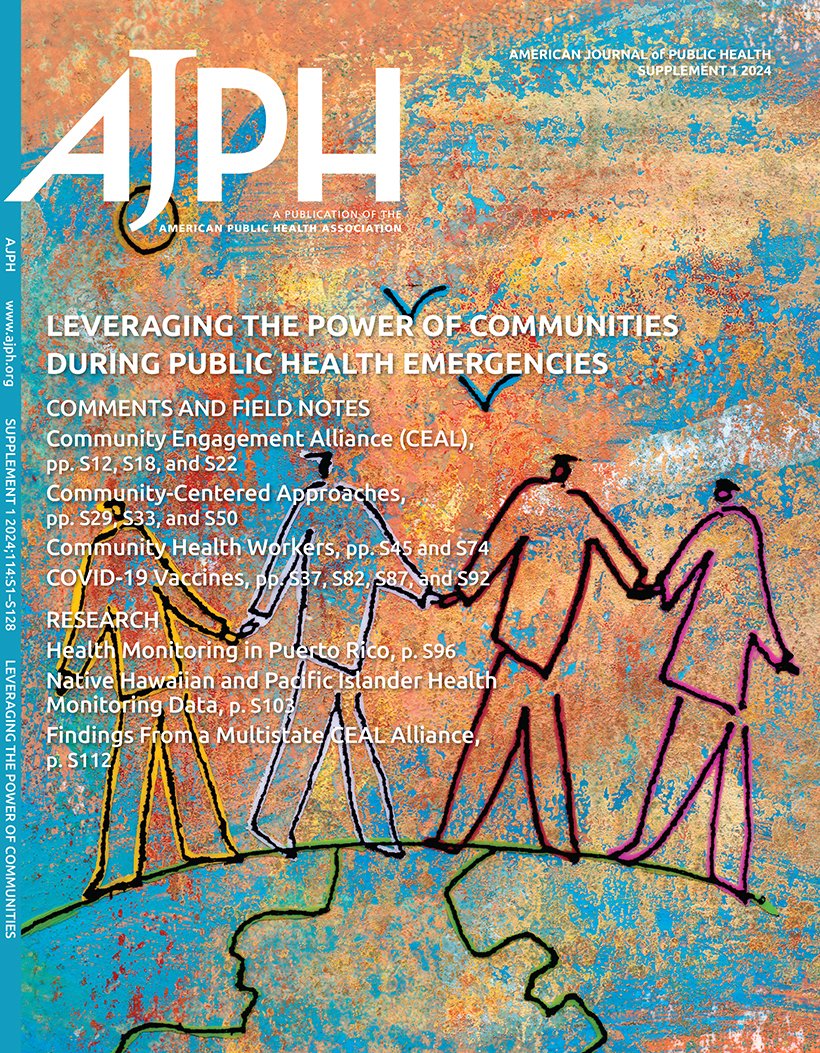Excess Mortality and Containment Performance During the COVID-19 Pandemic: Evidence From 34 Countries.
IF 9.6
1区 医学
Q1 PUBLIC, ENVIRONMENTAL & OCCUPATIONAL HEALTH
引用次数: 0
Abstract
Objectives. To expand COVID-19 containment indicators to evaluate the relationship between excess mortality and government response. Methods. We developed a longitudinal study analyzing excess mortality, COVID-19 containment, and structural conditions in 34 countries between 2020 and 2022. Results. The average excess mortality ratios of the 34 countries were 1.09, 1.14, and 1.11 in 2020, 2021, and 2022, respectively. Thirteen countries experienced continuous annual rises, while only 2 had consistent annual declines. Top-performing countries significantly reduced excess deaths by 5.7% (b = -0.06; 95% CI [confidence interval] = -0.10, -0.01; P = .02) in 2020 and 12.9% (b = -0.13; 95% CI = -0.17, -0.08; P < .001) in 2021, compared to bottom performers. Middle-performing countries saw reductions of 6.7% (b = -0.07; 95% CI = -0.11, -0.02; P = .01) and 10.6% (b = -0.11; 95% CI = -0.15, -0.06; P < .001). These findings suggest that better containment is associated with fewer excess deaths, even after accounting for preexisting structural differences. Conclusions. The COVID-19 containment indicators' precision emphasizes the association between better containment and lower excess mortality during early and postvaccine development periods. Public Health Implications. Our findings urge governments to utilize new metrics that balance flexibility and strictness for pandemic strategies, informing future policy interventions. (Am J Public Health. 2025;115(9):1518-1528. https://doi.org/10.2105/AJPH.2025.308136).COVID-19大流行期间的超额死亡率和控制绩效:来自34个国家的证据。
目标。扩大COVID-19遏制指标,以评估超额死亡率与政府应对措施之间的关系。方法。我们开展了一项纵向研究,分析了2020年至2022年间34个国家的超额死亡率、COVID-19防控和结构状况。结果。2020年、2021年和2022年,34个国家的平均超额死亡率分别为1.09、1.14和1.11。13个国家经历了连续的年度增长,而只有2个国家持续的年度下降。表现最好的国家将超额死亡人数显著减少了5.7% (b = -0.06;95% CI[置信区间]= -0.10,-0.01;P = 0.02)和12.9% (b = -0.13;95% ci = -0.17, -0.08;P < 0.001)。表现中等的国家减少了6.7% (b = -0.07;95% ci = -0.11, -0.02;P = 0.01)和10.6% (b = -0.11;95% ci = -0.15, -0.06;p < 0.001)。这些发现表明,即使考虑到先前存在的结构差异,更好的遏制措施也与更少的超额死亡有关。结论。COVID-19遏制指标的准确性强调了在疫苗开发早期和后期,更好的遏制与较低的超额死亡率之间的关联。公共卫生影响。我们的研究结果敦促各国政府利用新的衡量标准来平衡大流行战略的灵活性和严谨性,为未来的政策干预提供信息。[J] .公共卫生,2025;115(9):1518-1528。https://doi.org/10.2105/AJPH.2025.308136)。
本文章由计算机程序翻译,如有差异,请以英文原文为准。
求助全文
约1分钟内获得全文
求助全文
来源期刊

American journal of public health
医学-公共卫生、环境卫生与职业卫生
CiteScore
9.50
自引率
3.90%
发文量
1109
审稿时长
2-4 weeks
期刊介绍:
The American Journal of Public Health (AJPH) is dedicated to publishing original work in research, research methods, and program evaluation within the field of public health. The journal's mission is to advance public health research, policy, practice, and education.
 求助内容:
求助内容: 应助结果提醒方式:
应助结果提醒方式:


